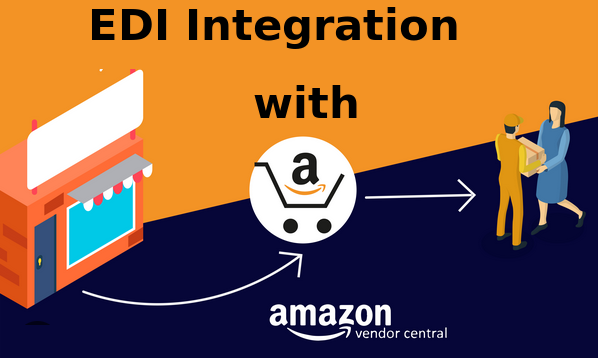Amazon Vendor Central integration is where your business can soar to new heights with seamless connectivity and streamlined operations.
As an Amazon vendor, you've embarked on a journey filled with opportunities for growth and expansion. Now, it's time to harness the full potential of this platform by integrating with Amazon Vendor Central.
Why Integrate with Amazon Vendor Central?
Imagine a world where tedious paperwork, manual labor, and operational bottlenecks are a thing of the past. With Amazon Vendor Central integration, that world becomes a reality. Say goodbye to Mondays and Wednesdays spent drowning in order processing and hello to a more efficient, automated workflow.
By integrating with Amazon Vendor Central, you unlock a plethora of benefits that can transform your business:
- Streamlined order management: Receive orders and send shipment data seamlessly, without the hassle of manual entry.
- Enhanced product visibility: Send listing information such as images and features to optimize your product listings on Amazon.
- Efficient invoicing: Receive invoices and reimbursements promptly, ensuring smooth financial transactions.
- Targeted marketing campaigns: Create tailored Amazon ad campaigns to reach your target audience effectively.
- Actionable insights: Access visual reports on your overall business profits to make informed decisions and drive growth.
What is Amazon Vendor Central?
Amazon Vendor Central is the exclusive platform where manufacturers, distributors, and suppliers converge to sell their products on Amazon. It's a golden ticket to reaching millions of customers worldwide, with Amazon handling inventory, pricing, shipping, customer service, and returns on your behalf.
As a certified Amazon vendor, you can leverage Vendor Central to expand your market reach and boost your sales without the complexities of managing customer interactions directly. With the Vendor Central Direct Fulfillment offer, you can even ship items directly to customers under the "ships from and sold by Amazon.com" tag, further enhancing your visibility and profitability.
The Power of Integration: EDI vs. API
Now, let's delve into the heart of Amazon Vendor Central integration: Electronic Data Interchange (EDI) vs. Application Programming Interface (API). These two integration methods serve as the backbone of seamless communication between your systems and Amazon Vendor Central.
- EDI: Electronic Data Interchange facilitates the exchange of data, including purchase orders and invoices, between two servers. With EDI integration, you can automate order processing, minimize errors, and streamline your workflow.
- API: Application Programming Interface enables different systems to communicate and share data over the web. Introduced by Amazon in Q3 2020, API integration offers a modern, web-based approach to integration, providing flexibility and scalability for your business.
While both EDI and API integration offer distinct advantages, the choice ultimately depends on your business needs and technical requirements. Whether you opt for EDI or API integration, the goal remains the same: to enhance efficiency, accuracy, and profitability.
The Amazon Vendor Central EDI Requirements
Before embarking on your integration journey, it's essential to understand the requirements for Amazon Vendor Central EDI integration. These requirements form the foundation of seamless communication between your systems and Vendor Central.
To initiate EDI integration, you'll need:
- A Vendor Central Account: Obtain access to Vendor Central and request the necessary permissions for EDI integration.
- Product IDs and Measurement Codes: Define item identifiers and measurement units for Amazon orders, ensuring consistency and accuracy in data exchange.
- Sender/Receiver IDs: Obtain unique IDs for verifying EDI documents and ensuring seamless communication with Amazon.
- Item Information: Prepare product data for testing and integration, including stock status, cost, item price, and case quantity.
- Connection Type: Choose the appropriate connection method (AS2, Amazon-Hosted SFTP, or VAN) for integrating your backend systems with Vendor Central.
Once you've gathered the necessary information and completed the self-service survey on Vendor Central, you're ready to embark on your integration journey.
Effective Integration: Maximizing Efficiency and Accuracy
Integration is more than just a technical process—it's a strategic investment in your business's success. To maximize the benefits of Amazon Vendor Central integration, you'll need a robust integration system that ensures efficiency, accuracy, and compliance.
Key considerations for effective integration include:
- Connector Selection: Choose a connector that can seamlessly integrate your backend systems with Vendor Central, providing accurate data exchange and automation of critical transactions.
- Compliance and Accuracy: Ensure compliance with Amazon's strict guidelines for order fulfillment and data exchange, minimizing errors and avoiding costly penalties.
- Scalability and Flexibility: Select an integration solution that can scale with your business and adapt to changing requirements, ensuring long-term success and growth.
- Cost and Time Investment: Assess the cost and time required for integration, considering factors such as system complexity, information exchange volume, and business scale.
While the initial investment in integration may vary depending on your business's needs and complexity, the long-term benefits far outweigh the costs. From reducing paperwork and manual errors to optimizing operational efficiency and minimizing chargeback costs, integration offers a myriad of advantages for Amazon vendors.
Conclusion: Embrace the Future of Integration
In conclusion, Amazon Vendor Central integration is not just a technical necessity—it's a strategic imperative for businesses looking to thrive in the digital age. By embracing integration, you unlock the full potential of Vendor Central, streamlining operations, and driving growth.
As you embark on your integration journey, remember to assess your business needs, choose the right integration method, and select a reliable connector for seamless data exchange.

